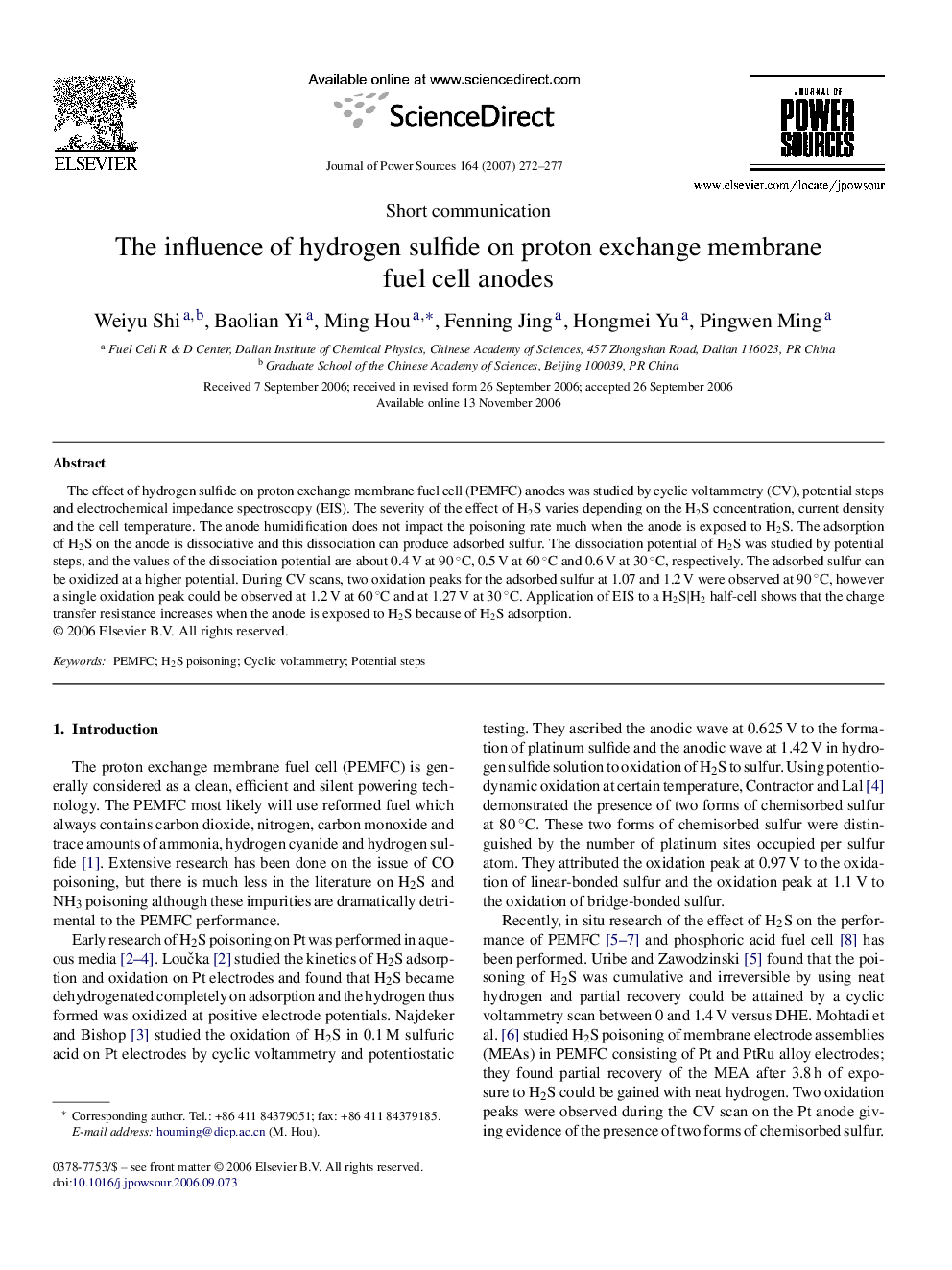| Article ID | Journal | Published Year | Pages | File Type |
|---|---|---|---|---|
| 1291718 | Journal of Power Sources | 2007 | 6 Pages |
The effect of hydrogen sulfide on proton exchange membrane fuel cell (PEMFC) anodes was studied by cyclic voltammetry (CV), potential steps and electrochemical impedance spectroscopy (EIS). The severity of the effect of H2S varies depending on the H2S concentration, current density and the cell temperature. The anode humidification does not impact the poisoning rate much when the anode is exposed to H2S. The adsorption of H2S on the anode is dissociative and this dissociation can produce adsorbed sulfur. The dissociation potential of H2S was studied by potential steps, and the values of the dissociation potential are about 0.4 V at 90 °C, 0.5 V at 60 °C and 0.6 V at 30 °C, respectively. The adsorbed sulfur can be oxidized at a higher potential. During CV scans, two oxidation peaks for the adsorbed sulfur at 1.07 and 1.2 V were observed at 90 °C, however a single oxidation peak could be observed at 1.2 V at 60 °C and at 1.27 V at 30 °C. Application of EIS to a H2S|H2 half-cell shows that the charge transfer resistance increases when the anode is exposed to H2S because of H2S adsorption.
